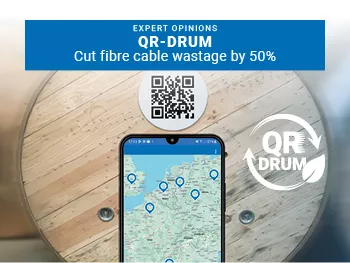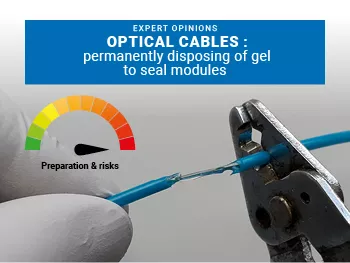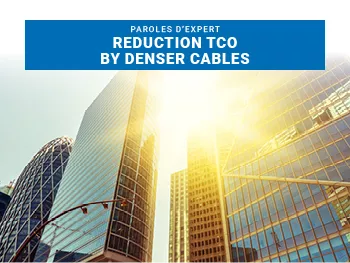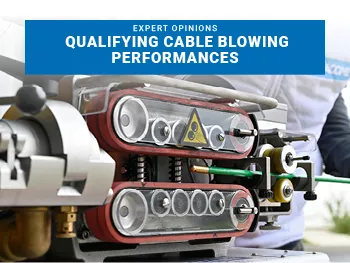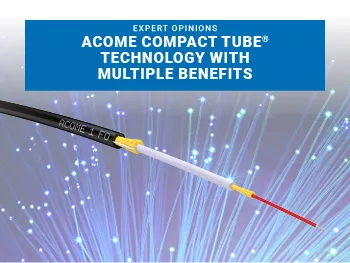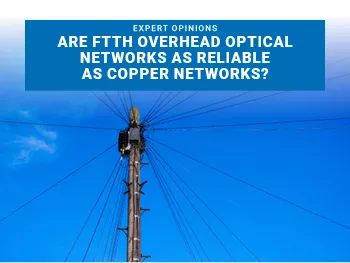Why pay attention to the level of elongation of the optical fibre cable?
Overhead networks have many advantages but also have their own set of concerns. One of them is the level of longitudinal elongation of the optical fibre cable. It is very important to take this into account in order to avoid wearing the fibres out unnecessarily.
Overhead optical fibre networks
More than ever at the heart of major technological developments, it is necessary to develop telecommunications networks adapted to meet future uses. These networks include overhead infrastructure. Overhead deployment requires less civil works and therefore has several advantages.
Advantages of deploying overhead cables:
- Less expensive than an underground network
- Saves time on deployment
- Deployment possible on an already existing infrastructure (electrical networks, telephone networks, etc.)
Like other types of networks, an overhead network is deployed in a specific environment and has its own limiting factors. It is therefore essential to choose the right optical fibre cables to ensure the network has the longest possible lifespan as well as to ensure its ability to constantly meet high-speed requirements.
What is fibre elongation?
Fibre elongation is the extension under stress caused by stretching, measured as a percentage and defined by cable manufacturers for each type of product. If this percentage is exceeded, there is a risk of weakening the fibre and the sustainability of the entire optical network.
If the fibre elongation is too high, there is a risk of the signal weakening or even disappearing altogether. For example, if there is too much tension on the cable, this can create microcracks that will cause the fibre to weaken and then break. Even if the fibre does not break, the signal can be severely weakened by the damage.
Stay vigilant to the elongation level of overhead cables
All along its life, an overhead optical cable faces constraints that affect its level of mechanical stress.
The following are the three main constraints of overhead cables:
- Wind
- Snow/ice
- The weight between two poles
Therefore, the traction performance of overhead optical fibre cables must be seriously taken into account.
The indicators you need to track in order to control the tension on the overhead cable
To ensure excellent product reliability, the cable manufacturers carry out tensile tests and monitor the elongation of the fibre. To find out the level of tension that an optical fibre cable can withstand, there are two major indicators governed by the regulatory authority, via IEC standards:
- The MOT (Maximum Operating Tension) is the maximum tension that the cable can withstand over the long term. The regulatory authority imposes an MOT < 0.2% for the extension of a fibre in relation to its idle state.
- The MAT (or Maximum Allowable Tension) is the maximum tension that the cable can withstand in the short term (i.e. during a one-off event such as a storm or snowfall). The regulatory authority imposes an MAT < 0.6% for the extension of a fibre in relation to its idle state.
MAT and weight: the right balance for optimal performance
It should be noted that two cables with the same MAT but different weights will not have the same performance. A lighter cable will result in less strain on the fibre and reduce the elongation risk. Furthermore, two cables with the same level of elongation may have different MAT values. This is why the integration of Compact Tube® micromodules into the overhead cable, which reduces the diameter and weight of its structure, optimises the lifetime of the network and promotes its performance.
Checking the MAT/weight ratio is also recommended by the regulatory authority. When calculating the ratio between the MAT (in daN) and the weight (in kg/km), the result must be greater than 2.1. Also, comparing two MAT values with a similar fibre extension level makes it possible to choose the best cable performance for a sustainable optical network.
How can we preserve fibres from excessive stress?
It is important to pay attention to the various tests carried out on the cables you choose. Tensile tests are performed on the cable to measure the maximum tension that the cable can withstand, to check the fibre elongation level and to measure the attenuation during these tests.
In addition, the MAT and MOT values must be respected to avoid fibre stress.
Elements to be taken into account to comply with the maximum tensions withstood by the cable:
|
UPON PURCHASE |
DURING INSTALLATION |
|
Choose your cable according to the desired application. You must assess the topology and climate of the deployment area and transmit them to the cable manufacturer. By doing so, the cable will be perfectly adapted to your network. Thanks to its engineering office, Acome pays particular attention to determining the best characteristics for each deployment in order to support the development of a sustainable optical network. |
Ask for the installation guide to adjust the sag and tension on the cable.
|
Also, pay particular attention to the distance between posts (span) and the weight of your cable: the lighter it is, the weaker the sag, and the less stress the cable will endure.
Different sources of topological tension on an overhead cable :
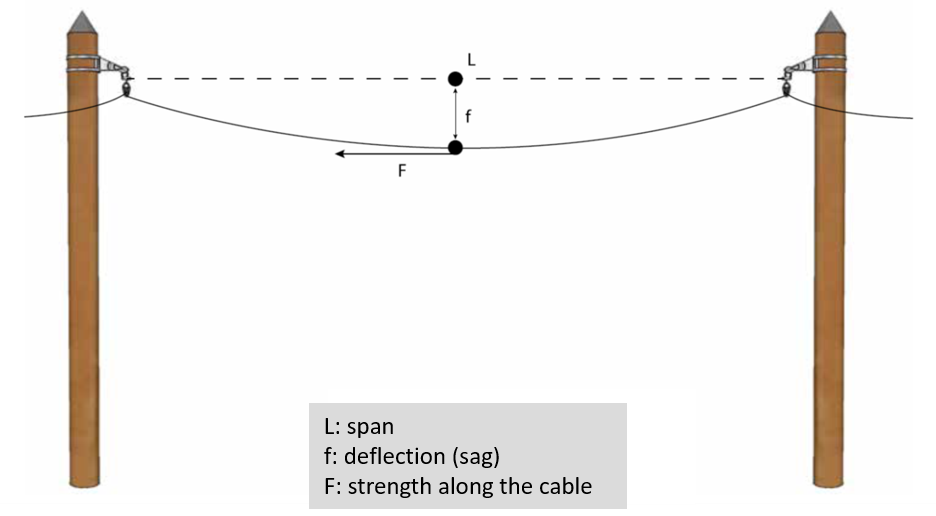
Good compatibility between overhead cables and accessories to preserve optical fibres
It is also important to choose the additional equipment (accessories) based on your cable. For example, you need to choose the right anchor clamp. If you use a clamp that is not suitable, you could damage the cable, deform the sheath and crush the fibres. At ACOME, we test the compatibility of cables with their accessories on request. To determine the right clamp for a cable, we carry out two tests: tensile strength (with simulation of extreme conditions) and vibration (with simulation of wind).

